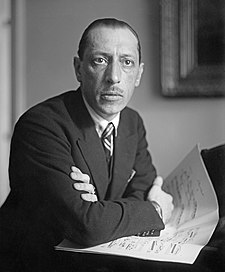Ever since we began our mission here at ITYWLTMT, we have
shared a “Year In Review” post in December, my opportunity to reflect on what
we have done in the 12 past months, and tease some of our programming for the
upcoming year. This year, however, I thought I would mostly forego the “review”
portion – save for my yearly YouTube “video retrospective”, and spend more time
talking about my programming for 2019, with a forward-look that may take us all
the way to 2022 – provided, of course, we still are active by then!
(I should point out that traffic on the Podcast channel has i ceeased to the point that I upgraded my Pod-O-Matic membership to PRO status, offering now 100 GB of bandwidth (Vs 15 previously). I can also keep more podcasts on the roster; that will come in handy in the future.
To begin, I’d like to pick up on a thought I shared last
year, and that I touched on mid-way through 2018: our retirement plans are
crystallizing (at least, I hope they are) but we are unlikely to move our
household in the next 12 to 18 months. This means that I’m proceeding under the
assumption that I will maintain my current level of activities – more or less
providing fortnightly Tuesday and Friday blog posits on alternating weeks and
music shares, with monthly (-ish) editions of Project 366 (More on that
project a little later in this post).
As I plan out 2019, I expect to produce 30 new montages (which has been the norm for the last couple of years), and at least
20 Tuesday shares (split between our Cover 2 Cover, Vinyl’s Revenge
and Once Upon the Internet series). Except for a few straggler shares, I
expect that most of my Project 366 Listener Guides will be finished (and
pre-positioned) by Easter, and that new shares will be used to establish new
“thematic arcs”. The two main thematic arcs I will be working on once I’m done
with the long-term work will be a pair of “Piano Sonata Projects” dedicated to Mozart
and Beethoven. I will share more on that as the year progresses.
On the Blog then, it will be “business as usual” until
September, following our usual routine and cadence.
Project 366 for 2019 (and 2020)
I recently issued the last of my Time Capsules, completing
Part 2 of Project 366 and proposing 244 Listener Guides. There are thus 122
guides left on the project, and I will be dispatching those in two separate
Parts:
Part 3 of the Project will cover Guides no. 245 to 300,
and will be shared in the Blog between January and August
2019. I will discuss more about “The Classic Collections” in a few weeks –
stay tuned!
Part 4 will be the long-teased “Classical Music
Calendar”, and that will begin on September 1st 2019 identifying
a “Daily Listener Guide” for every day on the calendar for 366 days, ending on
August 31st, 2020. In the course of that 12 month period, we will
identify Listener Guides 301 to 366, more or less providing 5 or 6 Guides every
month, as well as matching the previous 300 to dates along the way.
The idea of the “Musical Calendar” has always been the
ultimate objective of the project – what has changed in my mind along the way
is the “format” of the calendar, and that explains why this initial version
(which I am currently calling “Opus 1”) doesn’t try to integrate any of the
“new shares”. I’m playing with some ideas right now, but our Friday Podcasts
during that period may be a mix of and “new” montages on our Podcast channel,
for example.
As you can see, my current thin inking is that we would
institutionalize the calendar approach moving forward. I already have some
ideas for an “Opus 2” calendar, but let’s not get ahead of
ourselves…



:format(jpeg):mode_rgb():quality(90)/discogs-images/R-6128797-1411776587-3894.jpeg.jpg)



:format(jpeg):mode_rgb():quality(90)/discogs-images/R-4405076-1364026784-6091.jpeg.jpg)
:format(jpeg):mode_rgb():quality(90)/discogs-images/R-9404265-1479982777-9784.jpeg.jpg)
:format(jpeg):mode_rgb():quality(90)/discogs-images/R-8205763-1461867411-4817.jpeg.jpg)
:format(jpeg):mode_rgb():quality(90)/discogs-images/R-9108953-1474920429-8329.jpeg.jpg)
:format(jpeg):mode_rgb():quality(90)/discogs-images/R-6776418-1426403814-9173.jpeg.jpg)
:format(jpeg):mode_rgb():quality(90)/discogs-images/R-10036168-1490510152-8406.jpeg.jpg)

:format(jpeg):mode_rgb():quality(90)/discogs-images/R-2985084-1310431340.jpeg.jpg)
:format(jpeg):mode_rgb():quality(90)/discogs-images/R-5253977-1388830518-6969.jpeg.jpg)

:format(jpeg):mode_rgb():quality(90)/discogs-images/R-6264780-1415115754-2312.jpeg.jpg)